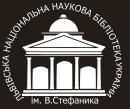DOI: https://doi.org/10.37222/2786-7552-2023-2-7
Sofiia Kamynska
Bachelor of Journalism
Lviv Ivan Franko National University
(Lviv, Ukraine)
Nataliia Voitovych
Candidate of Sciences in Social Communications
Lviv Ivan Franko National University
(Lviv, Ukraine)
CHARACTERISTICS OF THE GRAPHIC DESIGN WOMEN’S MAGAZINES’ OF GALICIA (LATE 19TH – EARLY 20TH CENTURIES)
The study focuses on women’s periodical magazines in Galicia from the end of the 19th century and up to 1939, with the aim of analyzing the peculiarities of the graphic concept of printed editions and their design, which influenced the time and genre features of printing. The object of the study is the women’s periodicals of Galicia, in particular the editions «Nova Khata» (new house), «Women’s Destiny», «Women’s Will», «Women’s Work» and «Women’s Voice».
The article pays attention to the graphic design of women’s magazines of that period, which, although they were not richly illustrated, used various graphic elements, portraits and fashionable clippings. Editors were aware of the importance of the appearance of magazines as a supplement to textual content, especially given the growing competition among magazines. In this context, the development of printing technologies, the growing interest in art and the modernization of design influenced the creation of aesthetically attractive magazines with unique features of graphic design.
The cover of the magazine plays a key role in its graphic face, encouraging readers to pick the magazine up. It consists of the title, main photo, logo and other graphic elements. White space is an important element of design, creating a sense of space and facilitating the convenient perception of information. The use of symbols and icons helps to highlight special sections and emphasize key points. Graphic effects add depth and expressiveness to the design.
Ensuring design consistency between different issues is an important aspect, creating unity and logical coherence throughout the publication. Categorization and structure help organize content and make it easier for readers to navigate. The compositional and graphic complex of the cover is crucially important, advertising the concept of the publication and reflecting the level of content.
The results of the study indicate that editorial offices used a variety of typographic techniques to give magazines an original look, contributing to the strengthening of national consciousness and cultural self-expression. The study will contribute to understanding the development of the women’s press and its impact on the public life of Ukrainian society in Galicia in the specified period.
Keywords: graphic design, women’s magazines, magazines of Galicia, design, graphic effects, magazine cover.
References
- Astaptseva, Kh. A. (2016). Reprezentatsiia mody na shpaltakh zhinochykh chasopysiv Lvova (kinets XIX – persha tretyna XX st.) [Representation of the fashion on the women magazines’ columns in Lviv (end of the 19th century – 1st third of the 20th century]. Retrieved from http://nz.uad.lviv.ua/en/articles/fashion-representation-on-the-pages-of-womens-magazines-in-lviv-end-of-xix-first-third-of-xx-century/ (in Ukr.).
- Homziak, A. (2018). Khudozhno-obrazni osoblyvosti typohrafiky v styli dyzainu Ar Deko [Artistic features of typography in the style of Art Deco], Naukovi zapysky. Seriia: mystetstvoznavstvo, (38), 298–308. Retrieved from http://dspace.tnpu.edu.ua/handle/123456789/9925(in Ukr.).
- Konovalova, O. Revoliutsiia oformlennia zhurnalu «Nova khata» v konteksti plastychnoi movy styliu Ar Deko (1920-ti– 1930-ti roky ) [The revolution in the design of the magazine Nova khata in the context of the elastic language of the Art Deco style (1920s-1930s)]. Retrieved from http://www.etnolog.org.ua (in Ukr.).
- Krainikova, T. (2021). Kultura Vydannia: osnovopolozhni poniattia, typolohiia vydan, vymohy standartiv: posibnyk [PUBLISHING CULTURE: basic concepts, typology of publications, requirements of standards: The Guide], Kyiv: Taras Shevchenko National University of Kyiv Educational and Scientific Institute of Journalism, 156 (in Ukr.).
- Mamalyhina, Ya. V. (2007). Kontseptsiia zhurnaliv svitohliadnoho spriamuvannia ta yikh komunikatyvna struktura [The concept of worldview magazines and their communicative structure], Naukovi zapysky Instytutu zhurnalistyky, (29), 152–158(in Ukr.).
- Myroniuk, D. I. (2013). Kontseptsiia drukovanoho vydannia, abo Koly «pomre» ostannia hazeta na zemli? [The concept of the printed edition, or When will the last newspaper on earth «die»?], Naukovi zapysky Instytutu zhurnalistyky, (50), 41–44(in Ukr.).
- Polikha, L. Ya. (2014). Suchasni pidkhody do vyznachennia termina «styl» u dyzaini periodychnykh vydan [Modern approaches to the definition of the term «style» in the design of periodicals], Naukovi zapysky Instytutu zhurnalistyky, (56), 285–288. Retrieved from http://nbuv.gov.ua/UJRN/Nzizh_2014_56_55 (in Ukr.).
- Prysiazhnyi, M. P., Lozynskyi, M. V. (2010). Orhanizatsiia roboty redaktsii hazety i pratsi zhurnalista: navchalnyi posibnyk [Organization of the work of the newspaper editorial office and the work of a journalist: a study guide], Lviv, 180 (in Ukr.).
- (2000). Tekhnika oformlennia hazety: kurs lektsii: navch. posib. dlia stud. fak. zhurnalistyky [Newspaper design technique: course of lectures: study guide for faculty of journalism], Kyiv: Znannia, 222 (in Ukr.).
- Tsymbaliuk, O. K. (2011). Stanovlennia i rozvytok zhurnaliv mod v Zakhidnii Ukraini (2-yi pol. XIX – 1-yi tretyny XX st.) [Formation and development of fashion magazines in Western Ukraine (2nd half of the 19th century - 1st third of the 20th century)], Visnyk Kharkivskoi derzhavnoi akademii dyzainu i mystetstv, (7), 30–35. Retrieved from http://nbuv.gov.ua/UJRN/had_2011_7_10 (in Ukr.).
- Shevchenko, V. E. (2002). Arkhitektonika suchasnoho ukrainskoho hazetnoho vydannia (systemna orhanizatsiia ta zakonomirnosti rozpodilu elementiv) [Architecture of modern Ukrainian newspaper publishing (systemic organization and element distribution patterns)], Thesis abstract, Kyiv, 19 (in Ukr.).
Article design requirements
Submissions
Editorial board
2022: Issue 1
2023: Issue 2
2023: Issue 3
2024: Issue 4
2024: Issue 5


